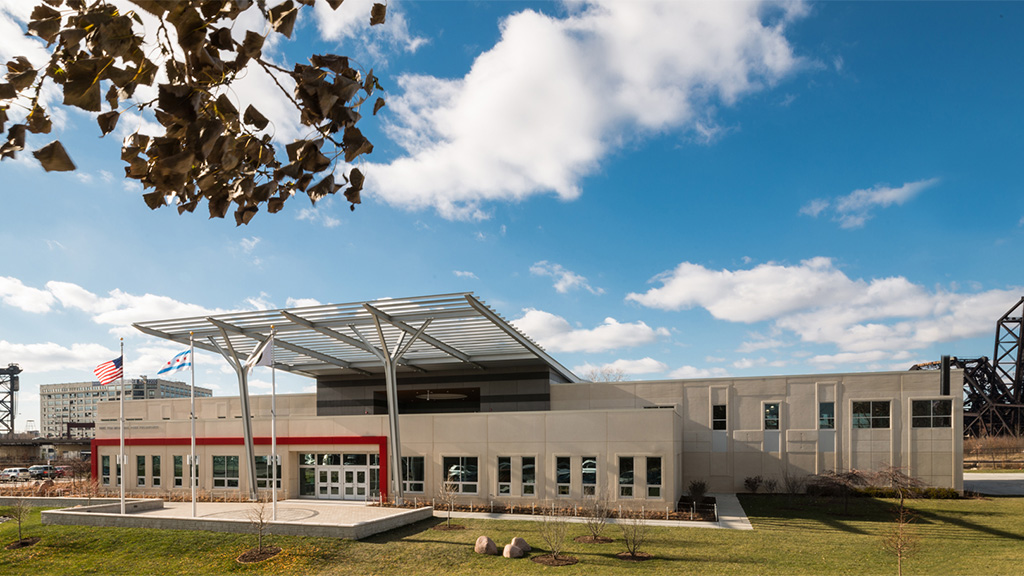A Chicago-based building-electrification consultant urges project owners to take a cool, calculated view of decarbonization, arguing there are responsible alternatives to unwise, all-in spending to reach sustainability goals.
Andrew Lehrer, an engineer and practice leader for high-performance buildings at ESD, specializes in decarbonization programs for commercial highrise projects in heat-dominated climates such as the northern U.S. and Canada.
He encounters owners seized by the desire to decarbonize a project but when presented with the option of 100-per-cent electrification using a large, expensive electrical heat pump system, for example, they balk at the cost and the space needed and back away.
Lehrer tells clients it does not have to be all or nothing, now or never.
“What I really want to emphasize is, this can be done responsibly with very significant impact even if you don’t go all the way,” said Lehrer recently. “I think the focus on going all the way to net-zero, with absolutely needing to go all the way to 100-per-cent reduction of onsite operational carbon, is not effective.
“And it’s actually harmful because it doesn’t let developers, landlords and asset managers understand that they can make a big impact in their facility today while also allowing their facility to be responsibly and easily upgraded in the future when technology grows and develops.”
Electrification as a strategy toward decarbonization has only gained momentum in the last two or three years, Lehrer said. It’s a concept that impacts mechanical for the most part as well as electrical and plumbing.
Heat pumps operating on electricity have come a long way technically in the past 10 years but there are still big caveats to using them, said Lehrer.
And there are other concerns that need to be addressed such as enhanced use of refrigerants, which also has global warming impact.
Lehrer starts off by explaining to clients that a multi-tiered strategy must be developed and pursued.
He said it’s critical builders pursuing electrification are as efficient as possible, employing both passive and active strategies with a mix of efficient systems.
Lehrer said passive energy management techniques such as building orientation, envelope design, stack effect management, efficient lighting and controls and system commissioning can significantly reduce the energy demand of a building.
The most important question his firm addresses with its clients is how they will be using their assets. If it’s an office building, the client has to be educated that if they want a net-zero project, they cannot operate business as usual.
“On a current project, we‘re augmenting all of the existing single-pane glazing with a double pane insert behind, so essentially getting triple-pane performance and making other upgrades to the building. We’re drastically reducing the heating requirement for the building,” said Lehrer. “That is allowing us to use ground-source heat pumps that produce lower-temperature hot water and swap out existing boilers at the head end without having to go out into the system.”
Markets like California and New York have higher electricity rates than other jurisdictions such as Ontario and Quebec, which can make investments in off-grid renewable energy infrastructure such as geothermal or photovoltaics more attractive in those states. But each project has to be assessed individually and often it becomes clear that hybrid, or what Lehrer calls “bridge,” solutions are required.
With one highrise Calgary project he worked on that was over a million square feet, Lehrer said, given the huge floor-area ratio and the basic physics of renewable energy such as solar, it would be impossible to install enough square footage of panels within the project site boundaries.
An effective bridge solution for projects may be to consider eliminating gas-fired heating for 90 or so per cent of heating hours, which significantly reduces operational carbon and allows the system to be easily retrofit in the future when heat pump technology is more space- and cost-efficient.
“We really want to encourage our clients to do the best that they can to get an 80-per-cent win today, get a 70-per-cent win today, it’s much better than a zero-per-cent win today. You can do it today with a manageable cost increase,” said Lehrer.
Follow the author on Twitter @DonWall_DCN











Recent Comments
comments for this post are closed